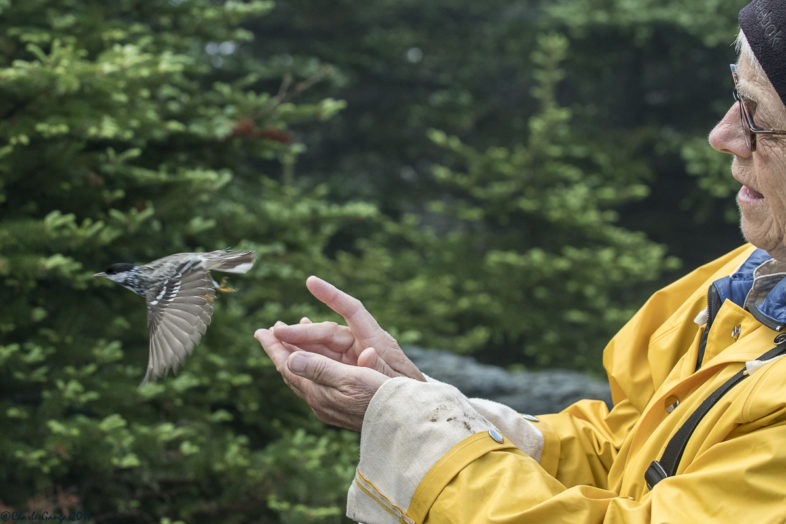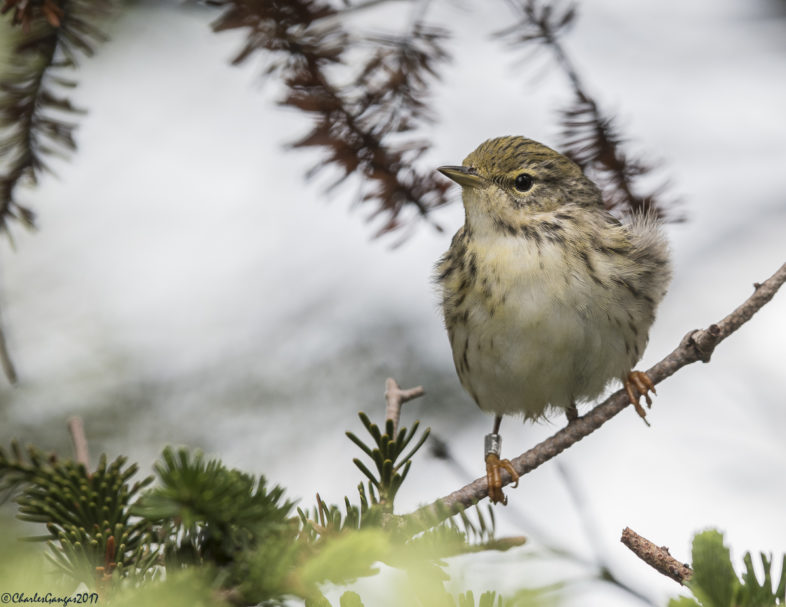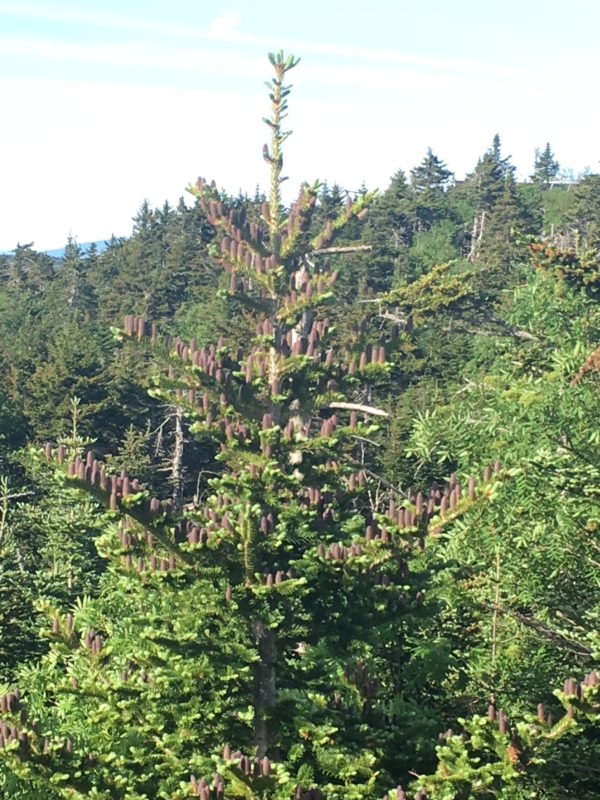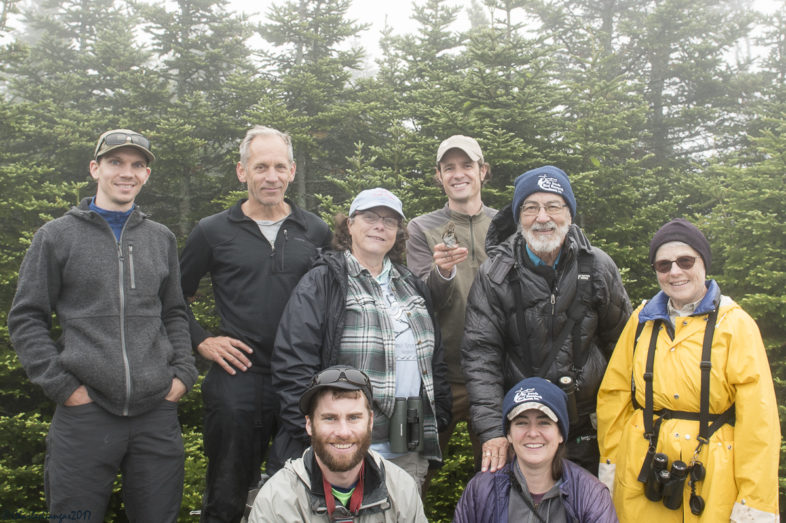
VCE friend and Mad Birder Pat Folsom releases a banded male Blackpoll Warbler on Mt. Mansfield, 22 June 2017. Photo courtesy of Chuck Gangas.
VCE hailed summer’s arrival on Mt. Mansfield this past Thursday, applying our trademark “brute force biology” to overcome another round of cool, wet weather. Having already canceled two previously scheduled June field trips, only torrential rains and gale winds could have caused us to miss this one. Jason Hill, Tim Duclos and I arrived on the ridgeline at 5 pm, just as a rain squall moved through. We held off until it passed, then fanned out to set our mist nets in the usual haunts, mainly along the Amherst, Lakeview and Long trails. Avian vocal activity was low, but an American Woodcock flushed from the Long Trail — our first ever on the ridgeline — provided a dramatic surprise. We captured 8 birds before a second, stronger storm cell swept through and forced an early net closure, quelling the dusk chorus. Morning’s weather forecast promised improvement.
A faint eastern glow and scattered stars were visible as we left our overnight digs in the ski patrol hut at 3500 feet elevation. Ascending the toll road, dense clouds quickly enveloped us, but it wasn’t raining, and winds were light. We opened our 22 nets by 4:30 am, but the dawn chorus was muted and captures few, as birds appeared not to moving much through the rain-soaked vegetation. Activity gradually picked up with warming temperatures and some lifting of the clouds, and captures were steady, if unspectacular, over the next 6 hours.
One might suspect that challenging weather has delayed the nesting season of mountaintop birds, but females of several species showed fully-developed brood patches. Based on singing behavior, numbers of the common ridgeline breeders seemed generally lower than “normal”, and our mist net results suggested the same, as we captured only 38 individuals during the combined evening-morning session. Apart from the woodcock, notable sightings outside our nets included a Peregrine Falcon stooping on ravens, 2 Turkey Vultures, and a single calling Red Crossbill.

This female Blackpoll Warbler offered confiding views moments after being banded on the Mansfield ridgeline, 22 June 2017. Her brood patch indicated that she has an active nest. Photo courtesy of Chuck Gangas.
Nary a red squirrel was to be found, but the balsam firs are loaded with cones, promising that a year from now, the ridgeline will be crawling with these rambunctious nest predators. We have not observed a heavy cone crop like this for several summers, suggesting that open-cup nesting birds like Bicknell’s Thrush and Blackpoll Warbler have fared relatively well in terms of reproductive success. That may change in 2018.

2017’s bumper crop of balsam fir cones promises a return of red squirrels in 2018, and problems for open-cup nesting songbirds like Bicknell’s Thrush. Photo by C. Rimmer.
Banding totals:
Yellow-bellied Flycatcher — 1
Blue Jay — 1 (a surprise capture of a yearling bird in very early flight feather molt, growing two innermost primaries on each wing)
Bicknell’s Thrush — 10 (2 new birds and 8 returns from previous years [1 banded in 2013, 1 in 2014, 2 in 2015, 4 in 2016]. Two interesting captures were a yearling female that we banded as a stub-tailed juvenile last July 14, and an adult bird banded on 9/16/15 that we had not encountered since.)
Swainson’s Thrush — 1 (a returning female banded as a yearling last June 29)
American Robin — 3 (all new, 2 males and a female)
Blackpoll Warbler — 7 (4 males and 3 females, including 4 returning birds banded in 2016)
Yellow-rumped Warbler (Myrtle) — 5 (all males, including 4 new and 1 returning bird banded in 2016 )
Dark-eyed Junco (Slate-colored) — 3 (all new, 1 male and 2 females)
White-throated Sparrow — 7 (all males, 5 new and 2 returns from 2014 and 2016)
As we wrap up June and head into July, we expect improved weather, increased mist net captures, the appearance of juveniles, and inevitable surprises as breeders begin dispersing. Only a month into our 26th consecutive field season on Mansfield, it’s far too early to forecast how things will end up, but we’re confident this long-term study is amassing a gold mine of information. Stay tuned.

The VCE 2017 summer solstice banding team, with Jason Hill holding a banded Bicknell’s Thrush. Photo courtesy of Chuck Gangas.

Nice work……………
Thanks for the informative and interesting report.
Down in the valleys, this continues to be riveting stuff! Thank you!